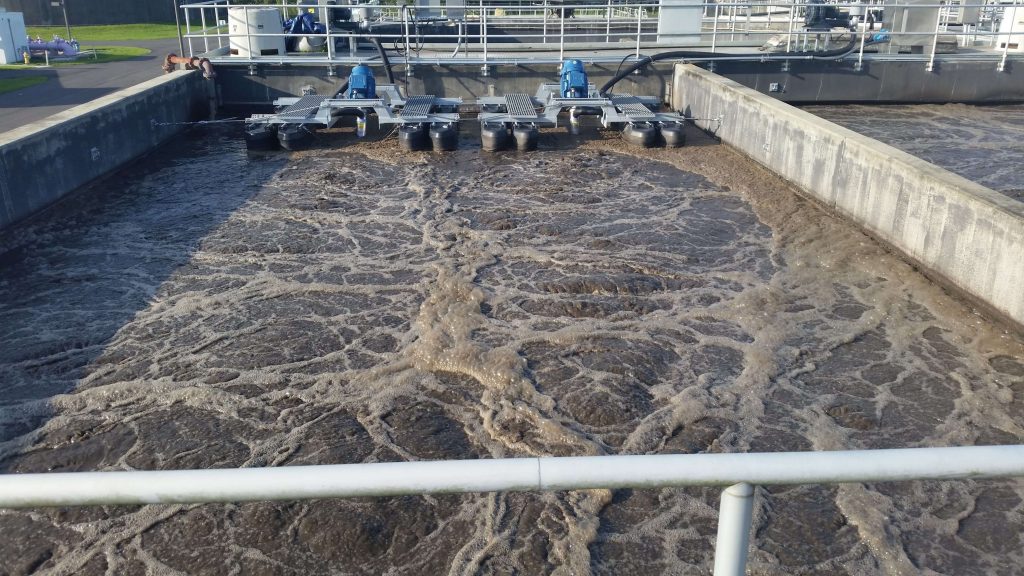Wastewater treatment, which is also interchanged with sewage treatment, is the process of removing impurities from wastewater bodies, or sources of sewage. This is usually done before they reach the aquifers or other natural water bodies like rivers, lakes, estuaries, or oceans. Since pure water is not readily available in nature, if any distinction has to be made between clean and polluted water, it is based on the type and concentration of the impurities present in the water and also on its intended use.

Broadly speaking, water is considered to be polluted when it is found to be containing a certain level of impurities which in turn might make it unfit for a particular use, which may be drinking, swimming or fishing. Even though water quality may be affected by natural conditions, the term pollution generally addresses human activity as the most probable source of its contamination.
Water pollution, hence, is caused mainly by the drainage of this contaminated waste containing water into the surface water or groundwater, and the process of wastewater treatment is the central element of water pollution control cycle.
Biological wastewater treatment, which is also the most widely adopted sanitation method over the globe, uses different types and families of bacteria and other microbial cultures for treating and purifying polluted water.
The involvement of these bacteria and microbial culture in the purification process accelerates the treatment of water pollution on a small surface, which might ideally be the wastewater treatment plant. Bio Sewage treatment cultures can prevent the eutrophication process of rivers, and also can additionally prevent the diffusion of diseases.
Municipal and industrial effluents are presently the primary source of wastewater and sewage. By the use of microbial cultures, it is possible to degrade the content present in these organic wastes as these are primarily used as sources of food and energy for their growth and multiplication.
You got it, microbial cultures are at the heart of most treatment process. A wastewater treatment plant can hence be considered as a farm where microbial cultures are grown on a large scale.
Generally, the types of bacteria and microbes culture used in the process can be broadly be classified into:
Aerobic Bacteria usually preferred in an aerated or new environment. These microbes use the free oxygen present in the water to break the pollutants down in the wastewater and converting it into a new sort of energy that this new culture can use to grow and multiply.
Anaerobic Bacteria usually preferred to reduce the volume of sludge in the water body and produce methane gas from it.
Facultative microorganisms are special microbes used in sewage treatment that can transition to aerobic or anaerobic cultures, based on the environment they are present in.
Composting microbes culture can widely be classified into three types which comprise of third, second and first Level Decomposers.
Third level decomposers are large creatures or Macro-organisms that may physically break the organic material down by either chewing, tearing or even sucking it into smaller pieces. Ex: Ants, beetles, centipedes, composting worms, flies, millipedes, slugs, snails, spiders, and. woodlice (sow bugs).
The Second Level of composting microbe cultures, comprising mainly of springtails, nematodes, beetle mites, mold mites, and protozoa, are the ones that consume the organic matter along with the organisms that make up the family of first level decomposers.
First Level Decomposers or composting microbe cultures are the much smaller microorganism cultures, playing the major role in the microbe composting process. These generally make use of the organic matter present in the compost bin or the heap as sources of their food, which eventually results in its decomposition into the rich brown material popularly know as the compost.
Bio effluent treatment solutions rely mainly on the bio sewage treatment cultures that are now more readily available than ever in the markets today. One of the bio sewage treatment culture used by bio Effluent Treatment Plants (ETP) is the Technozyme E. this bio sewage treatment culture is a peculiarly formulated blend of micro-organisms that are able to grow over the temperature ranging from 5°C to 55°C.
The main highlights of this bio effluent treatment solution is that it improves floc settling formation along with an increase in MLSS. It also prominently improves the waste degradation process. Another crucial benefit of adapting this bio effluent treatment solution is that it increases the capacity of municipal and industrial wastewater treatment systems by breaking down the overall fat & grease buildup and also by reducing the sludge buildup.
This bio sewage treatment culture also enhances odor control through natural organic acid oxidation.
